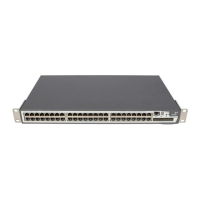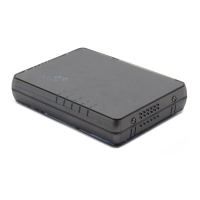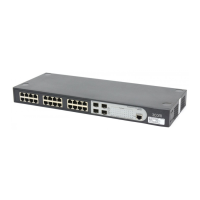SNMP Configuration Commands 487
coldstart: Configure to send SNMP cold start Trap messages when switch is
rebooted.
linkdown: Configure to send SNMP link down Trap messages when switch port
turns down.
linkup: Configure to send SNMP link up Trap messages when switch port
turns up.
warmstart: Configure to send SNMP warm start Trap messages when snmp is
re-enabled.
system: Configure to send SysMib trap messages.
Description
Use the snmp-agent trap enable command to enable the device to send Trap
message. Use the
undo snmp-agent trap enable command to disable Trap
message sending.
By default, Trap message sending is disabled.
The snmp-agent trap enable command and the snmp-agent target-host
command should be used at the same time. The
snmp-agent target-host
command specifies which hosts can receive Trap message. To send Trap messages,
at least one
snmp-agent target-host command should be configured.
Example
Enable to send the trap packet of SNMP authentication failure to 10.1.1.1. The
community name is
guest.
<SW5500>system-view
System View: return to User View with Ctrl+Z.
[SW5500]snmp-agent trap enable standard authentication
[SW5500]snmp-agent target-host trap address udp-domain 10.1.1.1
param securityname guest
snmp-agent trap life Syntax
snmp-agent trap life
seconds
undo snmp-agent trap life
View
System view
Parameter
seconds:
Specify the timeouts, ranging from 1 to 2592000 seconds. By default,
the timeout interval is 120 seconds.
Description
Use the snmp-agent trap life command to set the timeout of Trap packets. Use
the
undo snmp-agent trap life command to restore the default value.
The set timeout of Trap packet is represented by
seconds
. If time exceeds
seconds
, this Trap packet will be discarded.

